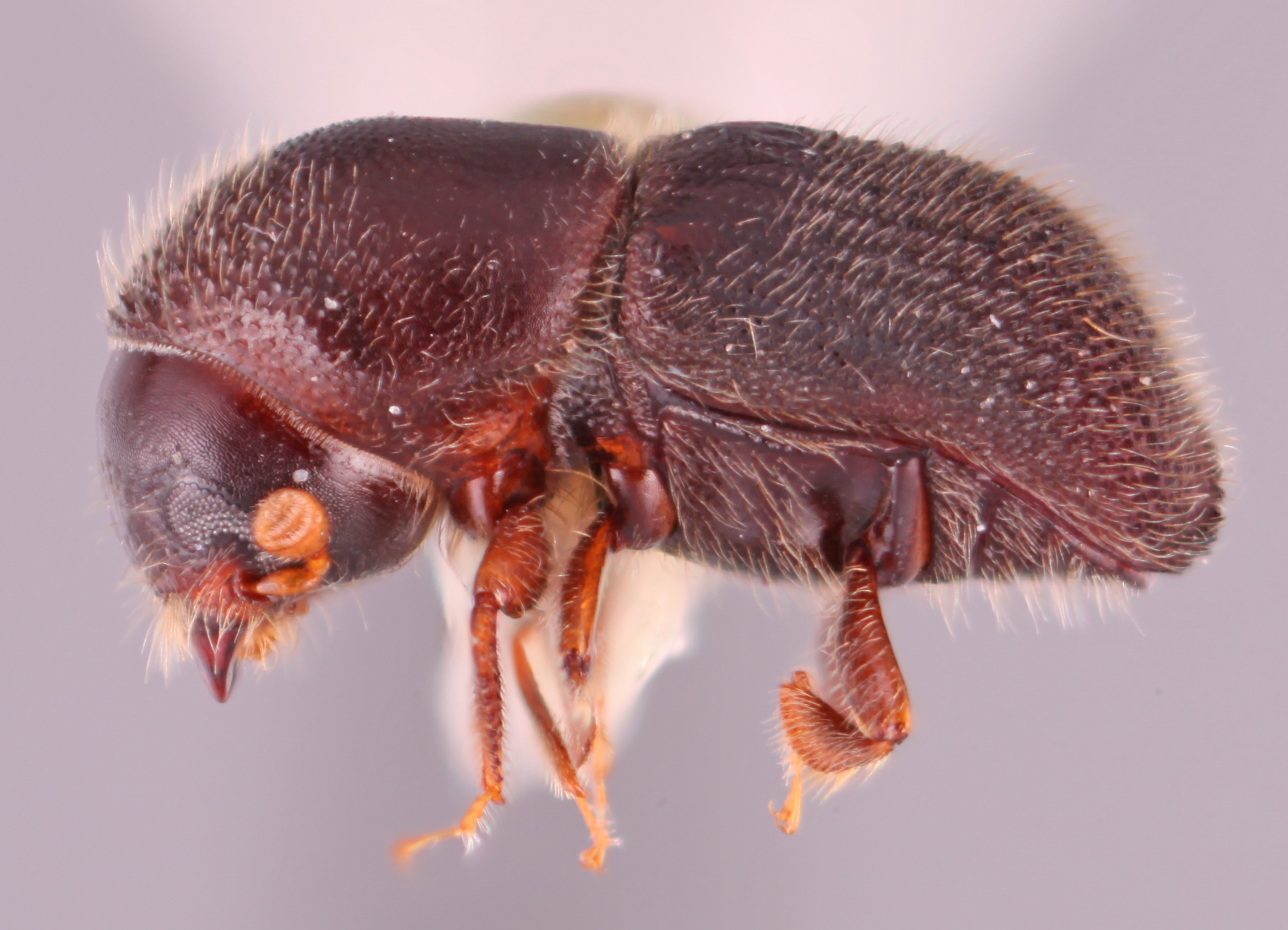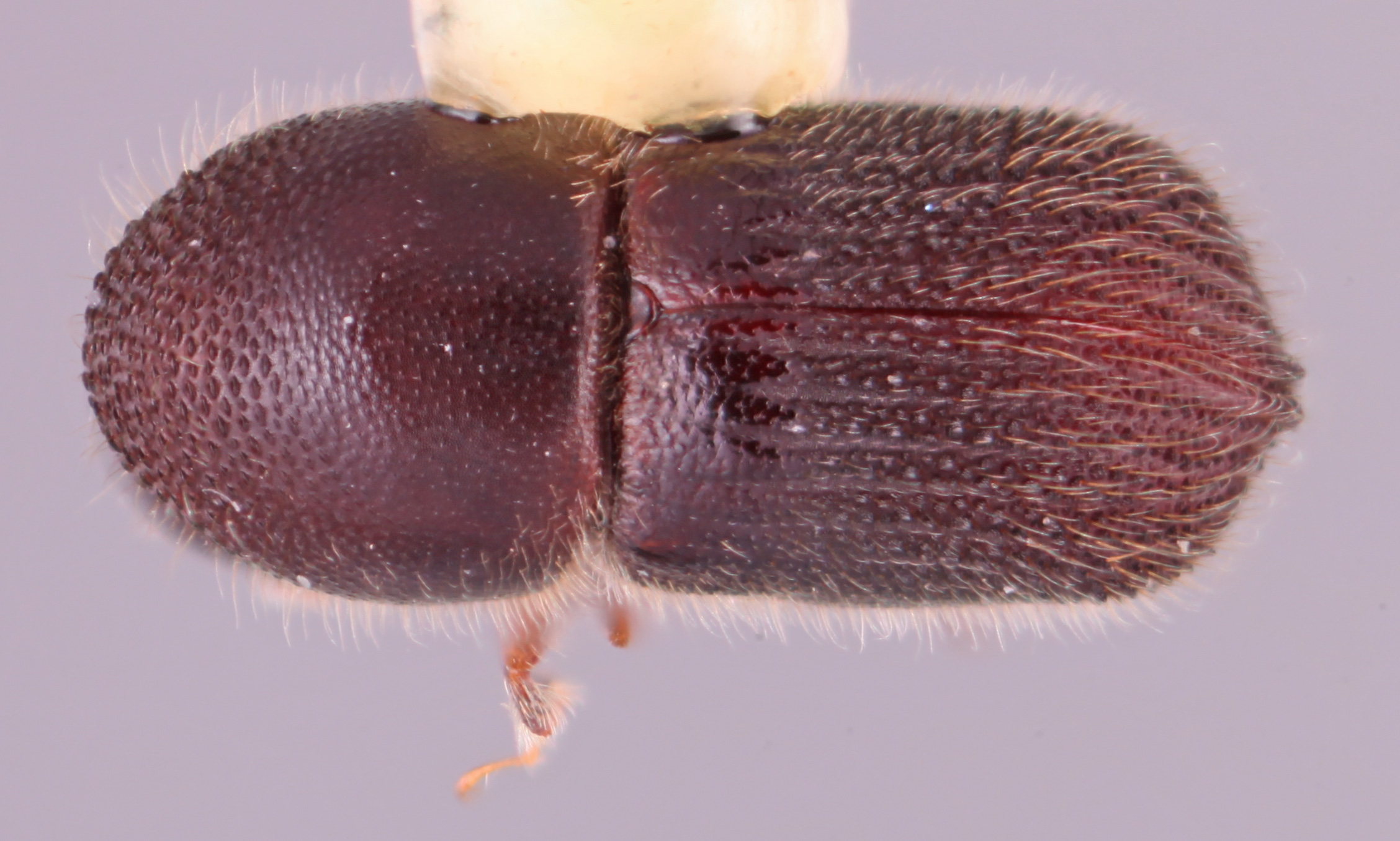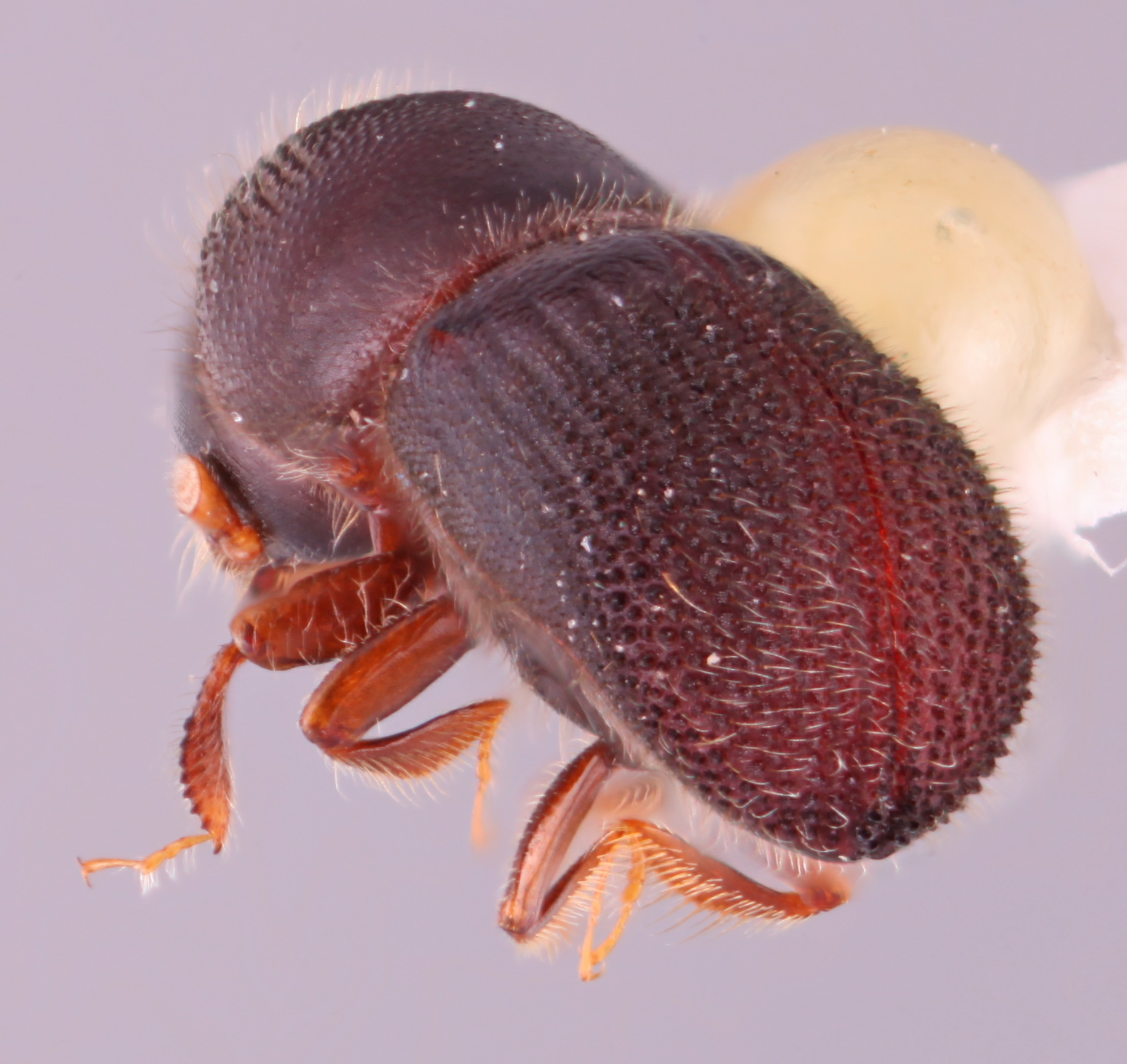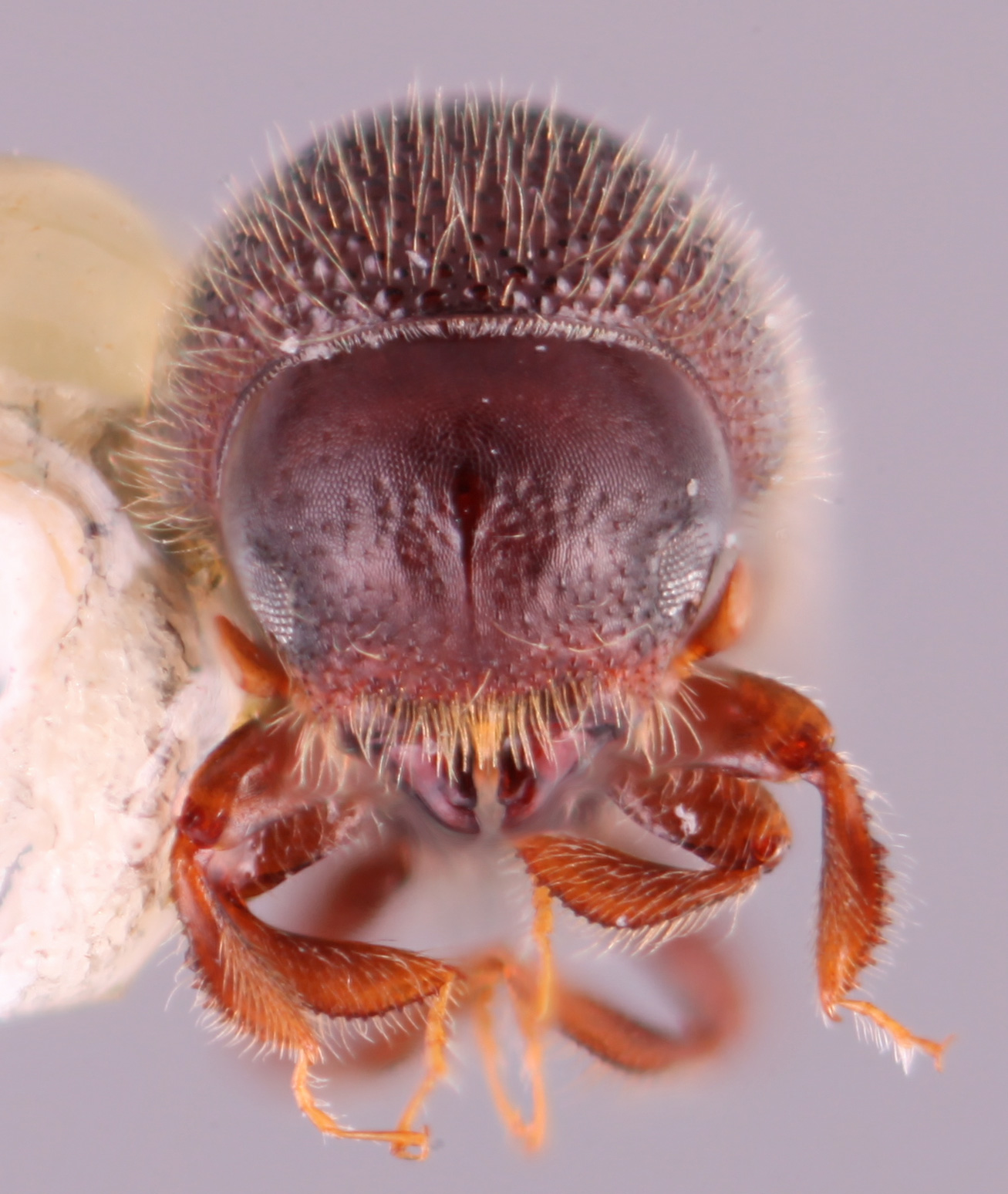Arixyleborus puberulus
|
Arixyleborus puberulus lateral; S.M. Smith |
|
Arixyleborus puberulus dorsal; S.M. Smith |
|
Arixyleborus puberulus declivity; S.M. Smith |
|
Arixyleborus puberulus frontal; S.M. Smith |
Taxonomic history
Xyleborus puberulus Blandford, 1896b: 215.
Arixyleborus puberulus (Blandford): Browne, 1955: 351.
Synonyms
Xyleborus hirtipennis Eggers, 1940: 146. Hulcr, 2010: 106.
Diagnosis
2.6−2.9 mm long (mean = 2.66 mm; n = 5); 2.48−2.64 times as long as wide. This species is distinguished by the protibiaprotibia:
tibia of the first pair of legs
posterior face flat and unarmed; antennalantennal:
pertaining to the antennae
club as broad as tall; posterolateralposterolateral:
relating to end of the side part/portion
 carinacarina:
carinacarina:
an elevated ridge or keel, not necessarily high or acute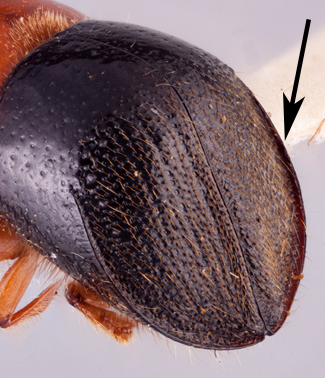 oblique, granulategranulate:
oblique, granulategranulate:
pertaining to a coarse, grainy surface texture
 ; elytralelytral:
; elytralelytral:
pertaining to the elytra
discdisc:
the flat central upper surface of any body part (e.g. pronotum and elytra) flat, without a transverse depression; elytralelytral:
flat, without a transverse depression; elytralelytral:
pertaining to the elytra
striae deeply impressedimpressed:
a depression in a surface
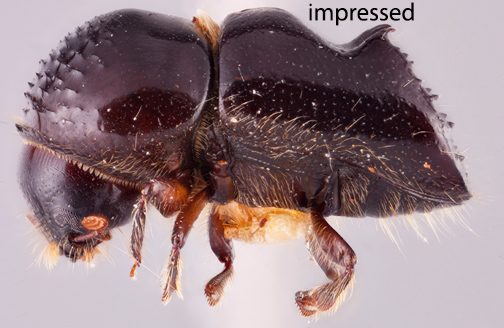 on discdisc:
on discdisc:
the flat central upper surface of any body part (e.g. pronotum and elytra) ; elytralelytral:
; elytralelytral:
pertaining to the elytra
interstriae with at least two rows of tuberclestubercle:
a small knob-like or rounded protuberance of the exoskeleton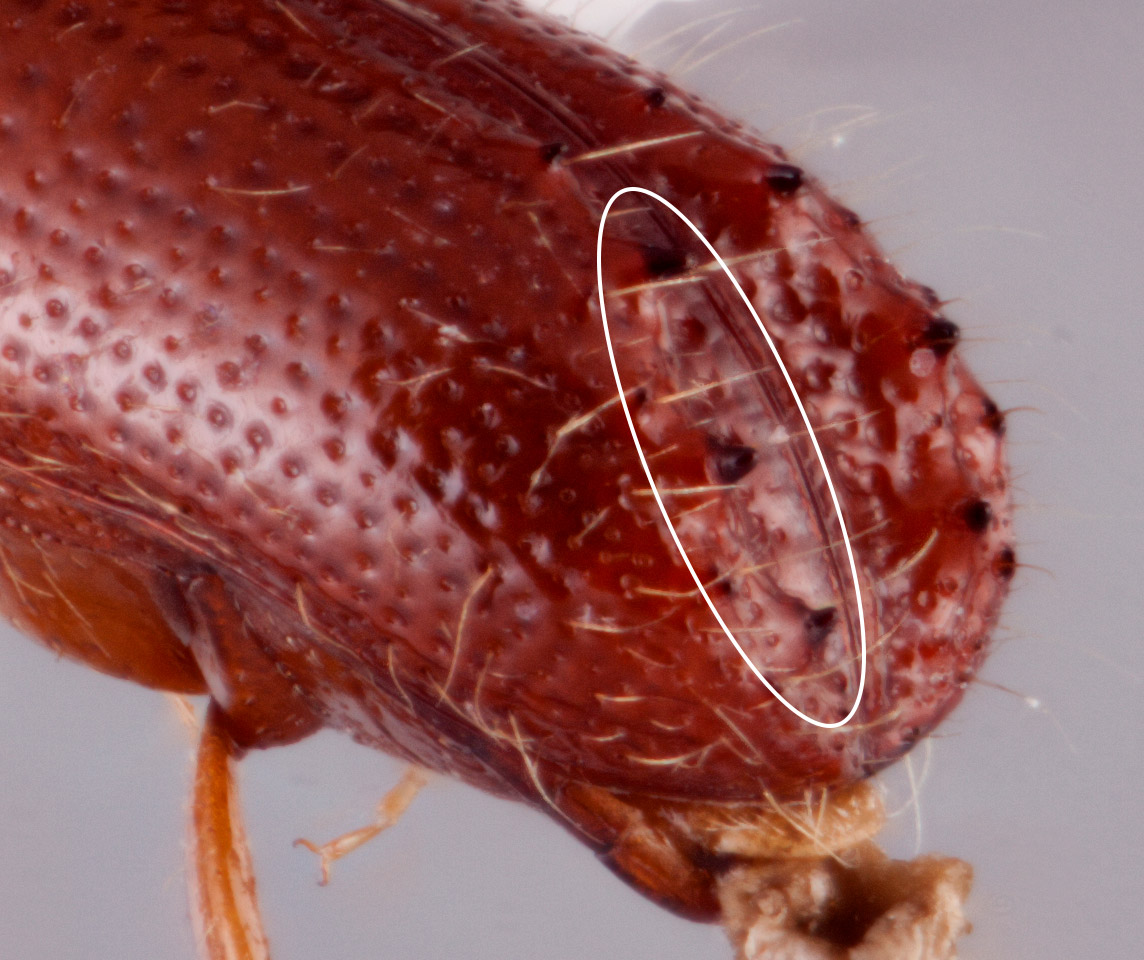 and long erecterect:
and long erecterect:
pertaining to setae that have their apices directed away from the body and appear straight
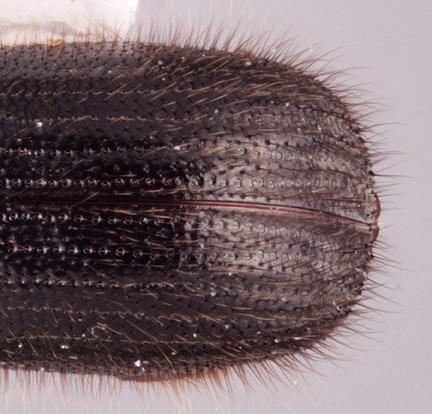 , fine hair-like setaeseta:
, fine hair-like setaeseta:
small hair-like or scale-like structure
, setaeseta:
small hair-like or scale-like structure
two times the width of an interstriainterstria:
longitudinal spaces along the elytra between the striae, which is not as<br />
impressed and bear smaller punctures.
 .
.
May be confused with
Arixyleborus moestus, A. scabripennis, and A. setosus
Distribution
China (Yunnan), Indonesia (Java), East Malaysia, New Guinea, Thailand, Vietnam
Host plants
recorded from three genera of Dipterocarpaceae, Canarium (Burseraceae) (Ohno 1990Ohno 1990:
Ohno S. 1990. The Scolytidae and Platypodidae (Coleoptera) from Borneo found in logs at Nagoya port 1. Research Bulletin of the Plant Protection Service, Japan 26: 83-94.), and Hevea (Euphorbiaceae) (Smith et al. 2020bSmith et al. 2020b:
Smith SM, Beaver RA, and Cognato AI. 2020b. A monograph of the Xyleborini (Coleoptera, Curculionidae, Scolytinae) of the Indochinese Peninsula (except Malaysia) and China. ZooKeys 983: 1-442. https://doi.org/10.3897/zookeys.983.52630)
DNA data
Sequences available for COI and CAD.
COI: HM064055.1
CAD: HM064234.1

